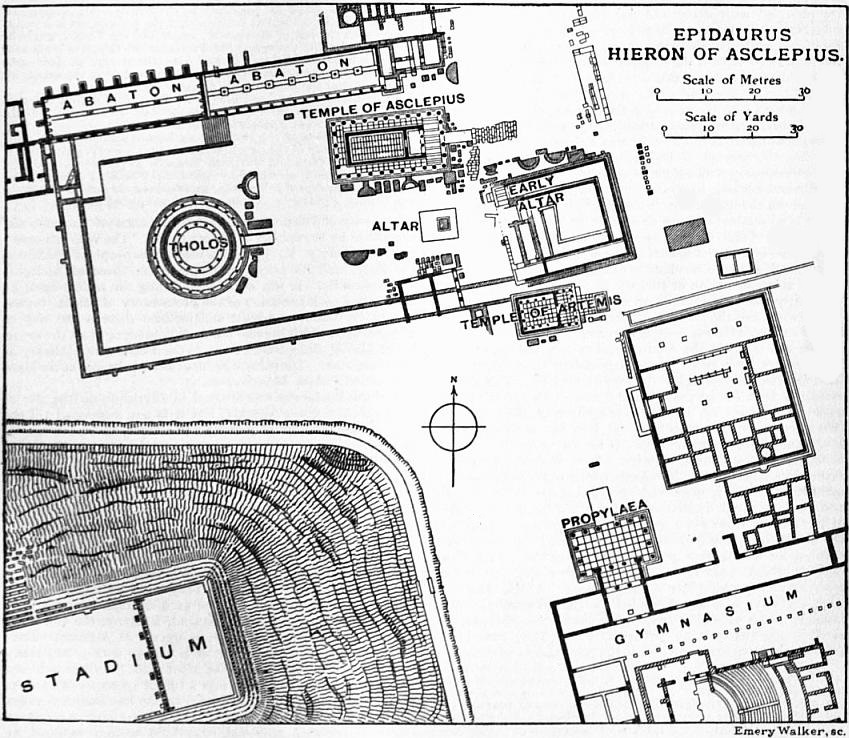of Asclepius combined to make Epidaurus a place of no small
importance. Its origin was ascribed to a Carian colony, whose
memory was possibly preserved in Epicarus, the earlier name
of the city; it was afterwards occupied by Ionians, and appears
to have incorporated a body of Phlegyans from Thessaly. The
Ionians in turn succumbed to the Dorians of Argos, who, according
to the legend, were led by Deiphontes; and from that time the
city continued to preserve its Dorian character. It not only
colonized the neighbouring islands, and founded the city of Aegina,
by which it was ultimately outstripped in wealth and power,
but also took part with the people of Argos and Troezen in their
settlements in the south of Asia Minor. The monarchical
government introduced by Deiphontes gave way to an oligarchy,
and the oligarchy degenerated into a despotism. When Procles
the tyrant was carried captive by Periander of Corinth, the
oligarchy was restored, and the people of Epidaurus continued
ever afterwards close allies of the Spartan power. The governing
body consisted of 180 members, chosen from certain influential
families, and the executive was entrusted to a select committee
of artynae (from ἀρτύνειν, to manage). The rural population,
who had no share in the affairs of the city, were called κονίποδες
(“dusty-feet”). Among the objects of interest described by
Pausanias as extant in Epidaurus are the image of Athena
Cissaea in the Acropolis, the temple of Dionysus and Artemis, a
shrine of Aphrodite, statues of Asclepius and his wife Epione,
and a temple of Hera. The site of the last is identified with the
chapel of St Nicolas; a few portions of the outer walls of the city
can be traced; and the name Epidaurus is still preserved by the
little village of Nea-Epidavros, or Pidhavro.
The Hieron (sacred precinct) of Asclepius, which lies inland about 8 m. from the town of Epidaurus, has been thoroughly excavated by the Greek Archaeological Society since the year 1881, under the direction of M. Kavvadias. In addition to the sacred precinct, with its temples and other buildings, the theatre and stadium have been cleared; and several other extensive buildings, including baths, gymnasia, and a hospital for invalids, have also been found. The sacred road from Epidaurus, which is flanked by tombs, approaches the precinct through a gateway or propylaea. The chief buildings are grouped together, and include temples of Asclepius and Artemis, the Tholos, and the Abaton, or portico where the patients slept. In addition to remains of architecture and sculpture, some of them of high merit, there have been found many inscriptions, throwing light on the cures attributed to the god. The chief buildings outside the sacred precinct are the theatre and the stadium.
The temple of Asclepius, which contained the gold and ivory statue by Thrasymedes of Paros, had six columns at the ends and eleven at the sides; it was raised on stages and approached by a ramp at the eastern front. An inscription has been found recording the contracts for building this temple; it dates from

